The Battle Gets Underway
The Cannon Master is quite busy.... He wants to maximize points.
One Point - Hitting the sail of the opposing ship
Two Points - Hitting the Captain and First Mate (disables the ability to handle the ship}
Three Points - Hitting the transom from the back and disable the steering gear

Loading the cannon
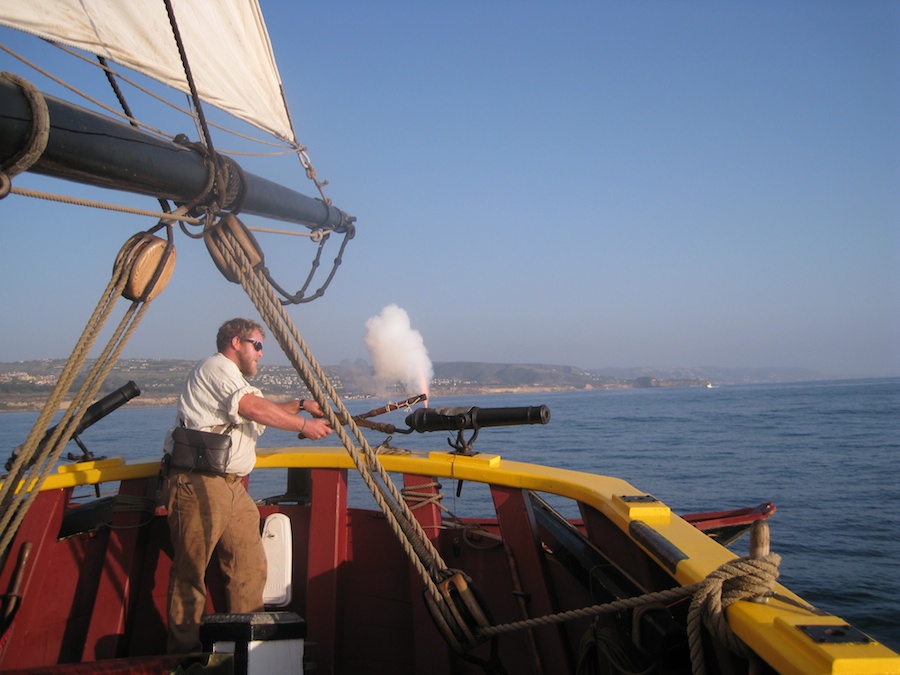
Big Ka-Boom
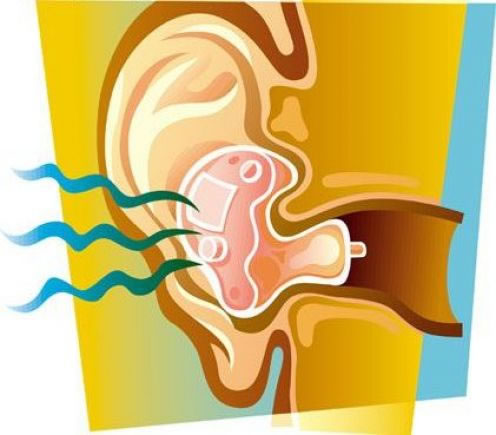
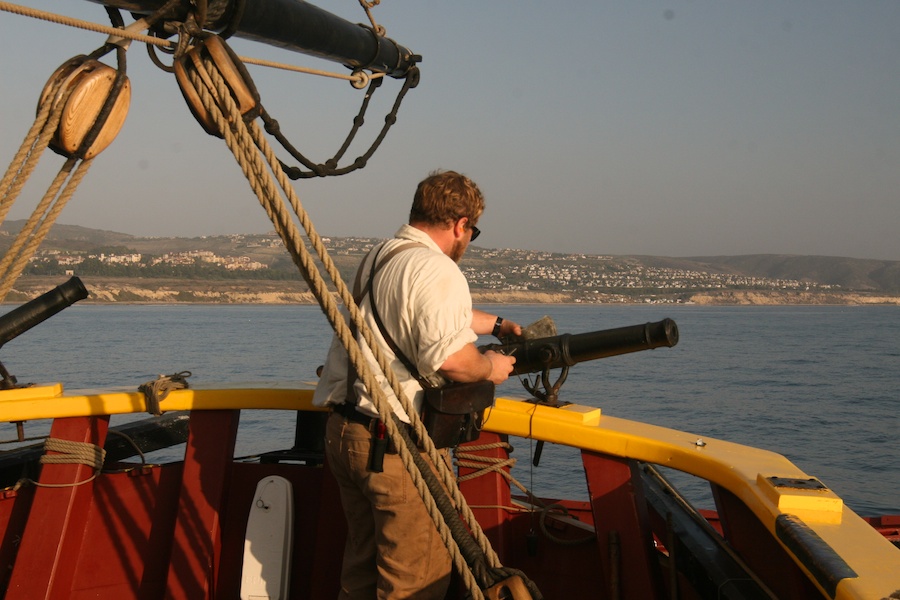
Getting ready
Did You Know? - Gunpowder, also known since in the late 19th century as black powder, was the first chemical explosive and the only one known until the mid 1800s. It is a mixture of sulfur, charcoal, and potassium nitrate (saltpetre) - with the sulfur and charcoal acting as fuels, while the saltpeter works as an oxidizer. Because of its burning properties and the amount of heat and gas volume that it generates, gunpowder has been widely used as a propellant in firearms and as a pyrotechnic composition in fireworks.
Apparently discovered in the 9th century by Chinese alchemists searching for an elixir of immortality[3] gunpowder led to the invention of fireworks and the earliest gunpowder weapons in China. In the centuries following, gunpowder weapons began to spread from China, through the Middle East, and then into Europe.
Gunpowder is classified as a low explosive because of its relatively slow decomposition rate and consequently low brisance. Low explosives deflagrate at subsonic speeds, whereas high explosives detonate, producing a supersonic wave. Ignition of the powder packed behind a bullet must generate enough pressure to force it from the muzzle at high speed, but not enough to rupture the gun barrel. Gunpowder is thus less suitable for shattering rock or fortifications. Gunpowder was widely used to fill artillery shells and in mining and civil engineering to blast rock roughly until the 2nd half of the 19th century, when the first high explosives (nitro-explosives) were discovered.
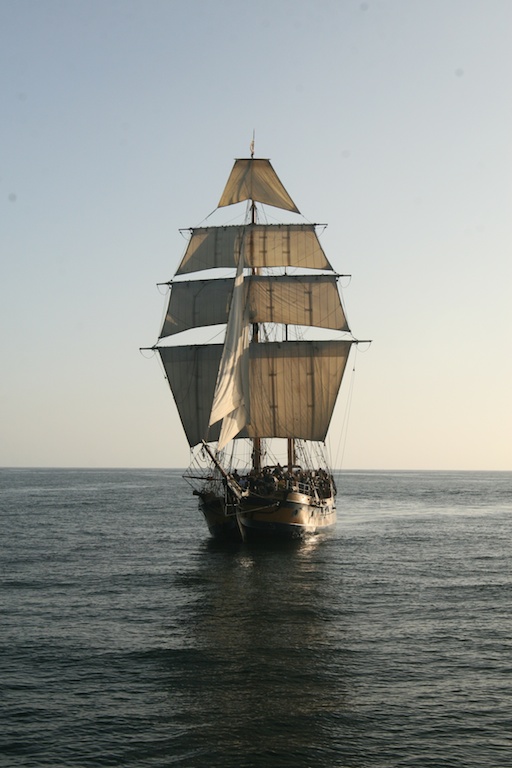
Here it comes....
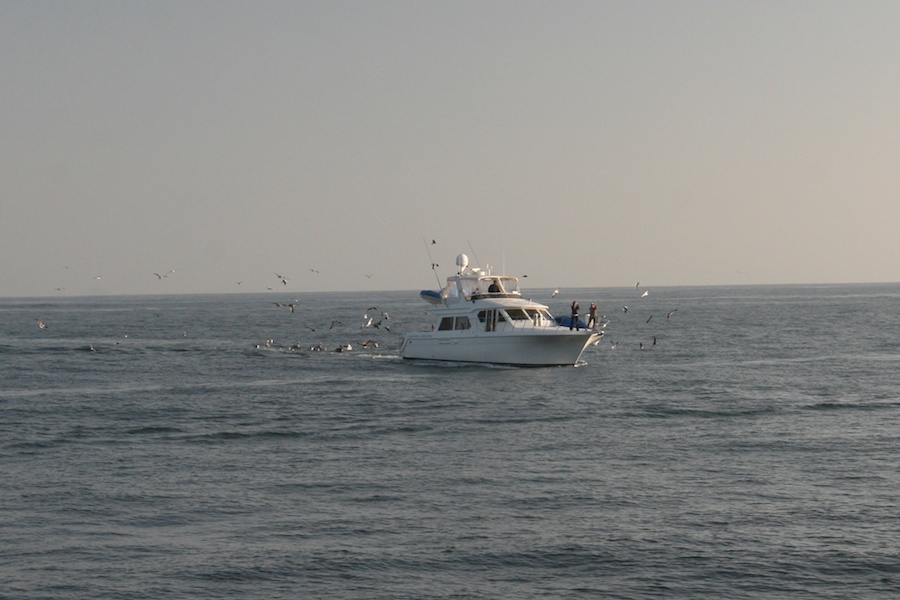
We had people watching us... The birds were watching them

They kept their distance
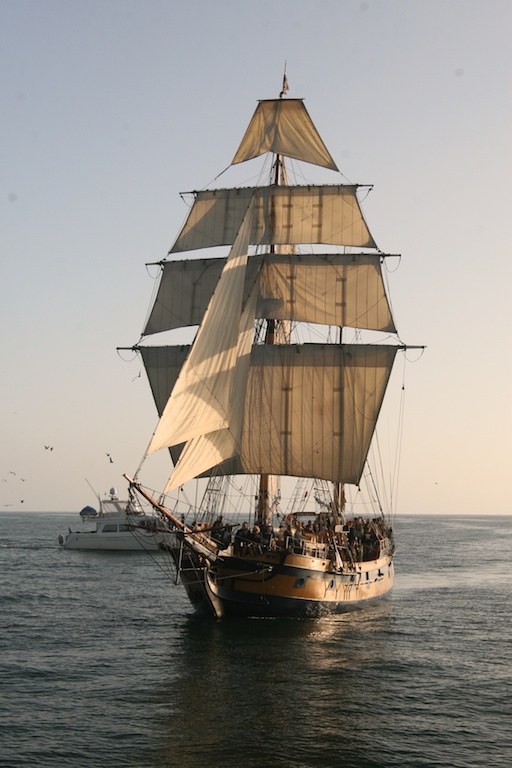
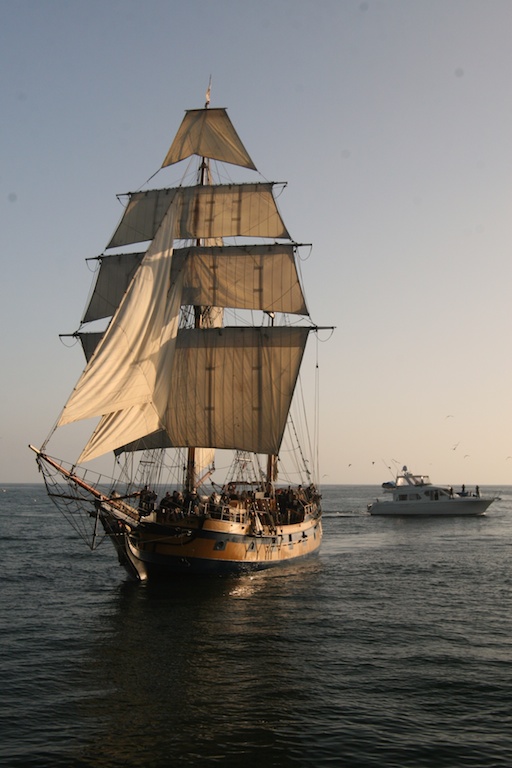
The little ships better watch out.... The tall ships are not overly maneuverable
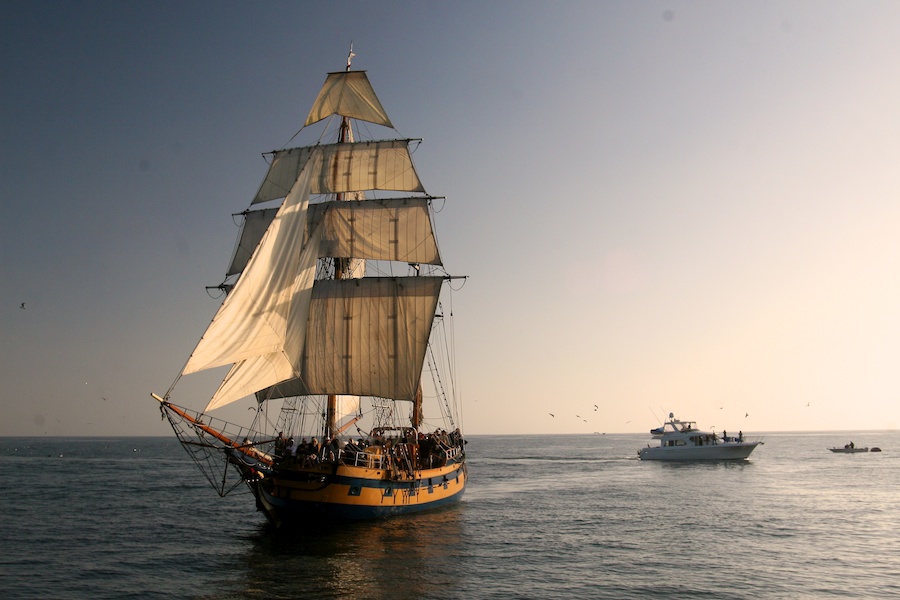
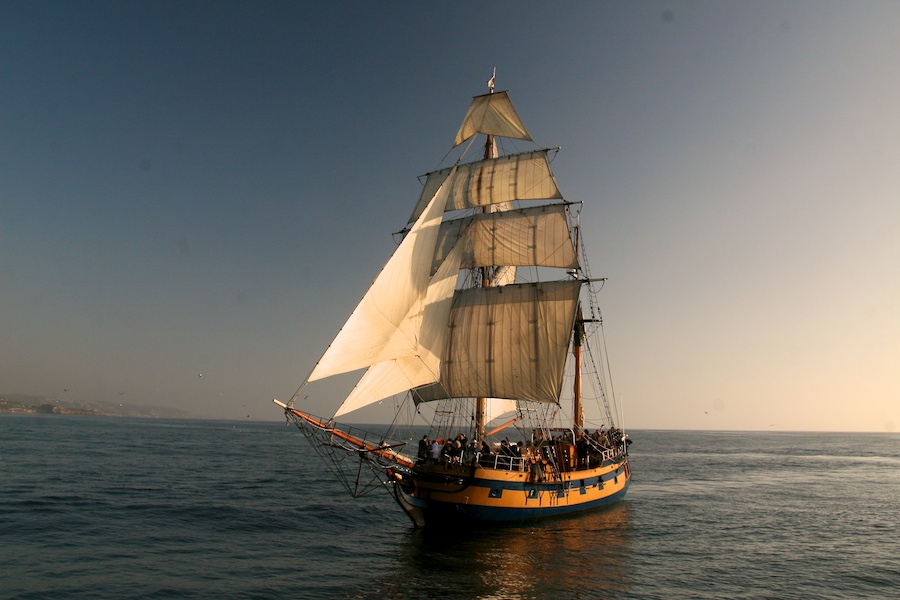
The Hawaiian Chieftan
Did You Know? - Hawaiian Chieftain is the name of a sailing vessel briefly known as the Spirit of Larinda. Built in 1988 in Lahaina on the island of Maui, the Hawaiian Chieftain is a contemporary interpretation of a traditional design. She is unique with the rig of an 19th century trading vessel and a modern triple keel, shallow draft hull. Drawing only 5.5 feet (1.7 m), she is highly maneuverable in shallow waters.
The Hawaiian Chieftain was commissioned by Laurence H. Dorcy, Jr., designed by nautical architect Ray Richards, and built by Morgan Davies for project manager Gsylord Drake Thomas on the island of Maui; under its paint, her bowsprit bears the inscription "Lahaina Welding Co." She was based in Sausalito, CA for many years, sailing up and down the coast with the Lady Washington on Voyages of ReDiscovery, providing hands-on history programs teaching 4th and 5th graders about the exploration and trade along the West Coast in the 1790s. Hawaiian Chieftain in her current colors
In the winter of 2004, she was sold to a Cape Cod sailing program and renamed the Spirit of Larinda; however, due to the suicide of her owner, she remained inactive. In October 2005, the Grays Harbor Historical Seaport Authority, owner of Lady Washington, purchased her to add to its fleet. Returning to her original identity as the Hawaiian Chieftain, she joined up with the Lady Washington on February 25, 2006 and is now providing joint education and sail training up and down the west coast of the United States. [
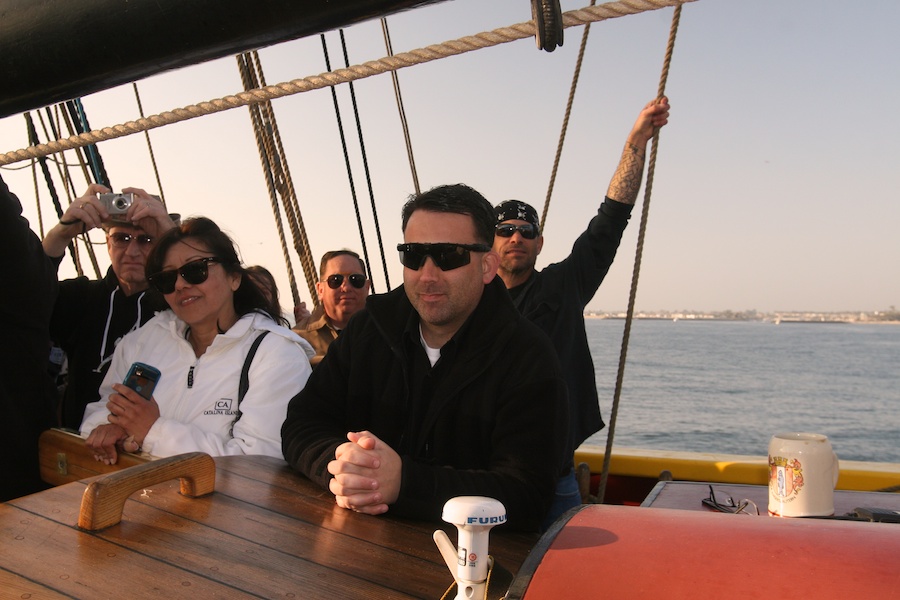
Pete enjoys the battle
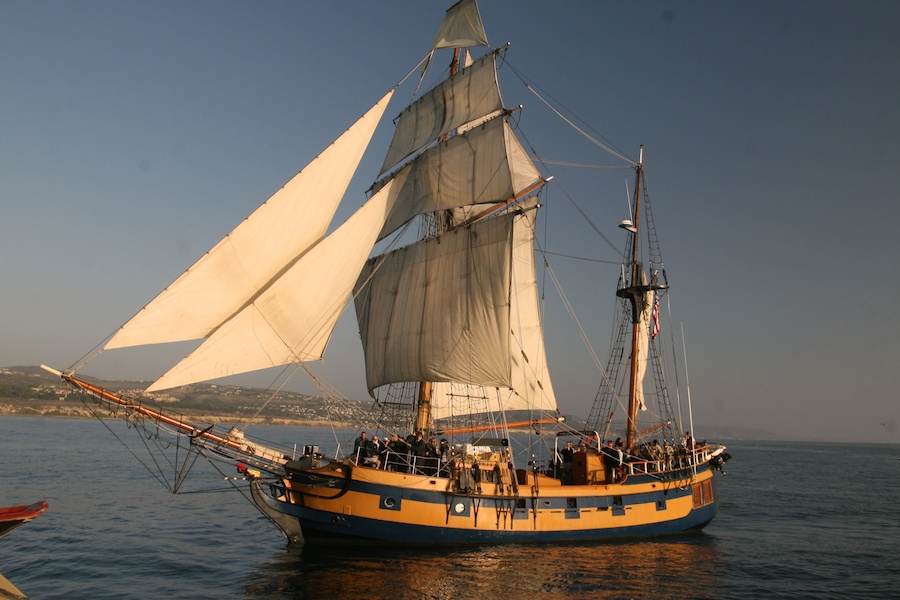
Broadside in process
Did You Know? - In the Age of Sail (and in the early years of steam) ships had long rows of guns set in each side of the hull which could only fire to the one side: firing all guns on one side of the ship was known as a "broadside"; firing all guns on both sides was a double broadside. The cannons of 18th century men of war were accurate only at short range, and their penetrating power mediocre, entailing that thick hulls of wooden ships could only be pierced at short ranges.
These wooden ships sailed closer and closer towards each other until cannon fire would be effective. Each tried to be the first to fire a broadside, often giving one party a decisive headstart in the battle when it crippled the other ship.[
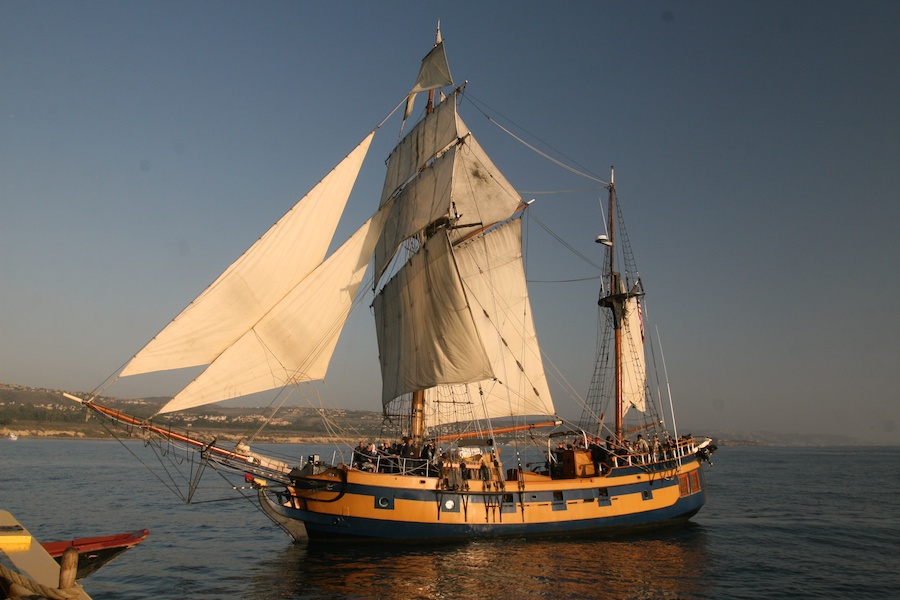
Boom
Did You Know? - Additionally, the term broadside is a measurement of a vessel's maximum simultaneous fire power which can be delivered upon a single target, because this concentration is usually obtained by firing a broadside. This is calculated by multiplying the shell weight of the ship's main armament shells times the number of barrels that can be brought to bear. If some turrets are incapable of firing to either side of the vessel, only the maximum number of barrels which can fire to one side or the other are counted.
For example, the American Iowa-class battleships carry a main armament of nine 16-inch (410 mm) main guns in turrets which can all be trained to a single broadside. Each 16-inch shell weighs 2,700 pounds (1,200 kg), which when multiplied by nine (the total number of barrels in all three turrets) equals a total of 24,300 pounds (11,022 kg). Thus, an Iowa-class battleship has a broadside of 12 short tons (11.0 tons), the weight of shells that she can theoretically land on a target in a single firing.
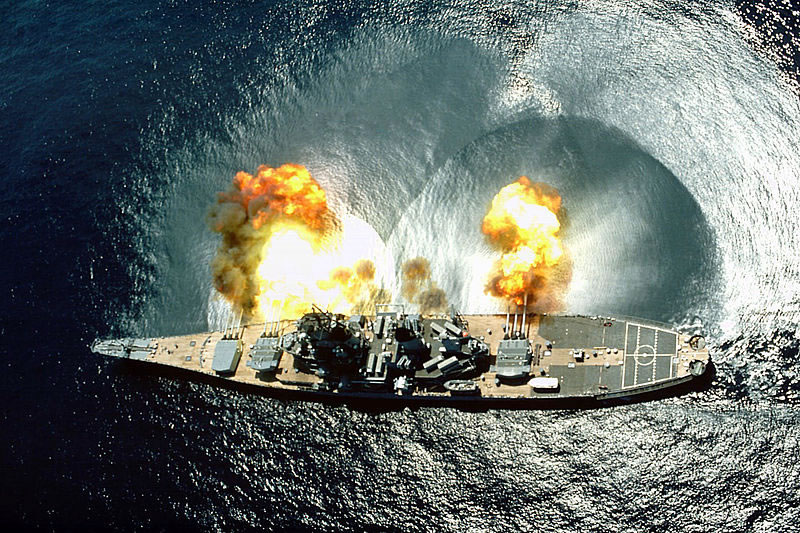
We are NOT that powerful

The smoke gives it away
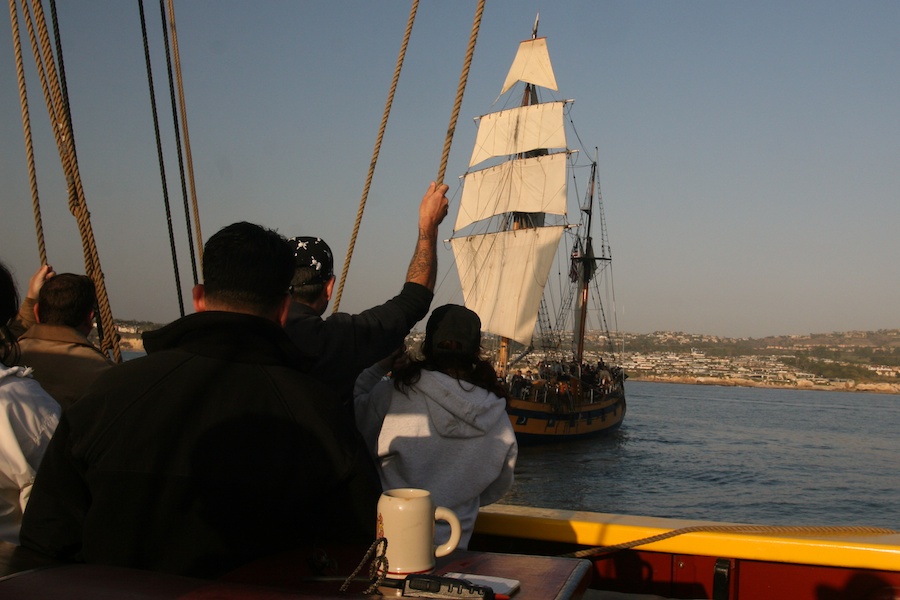
1-2-3 Blam Boom Bang
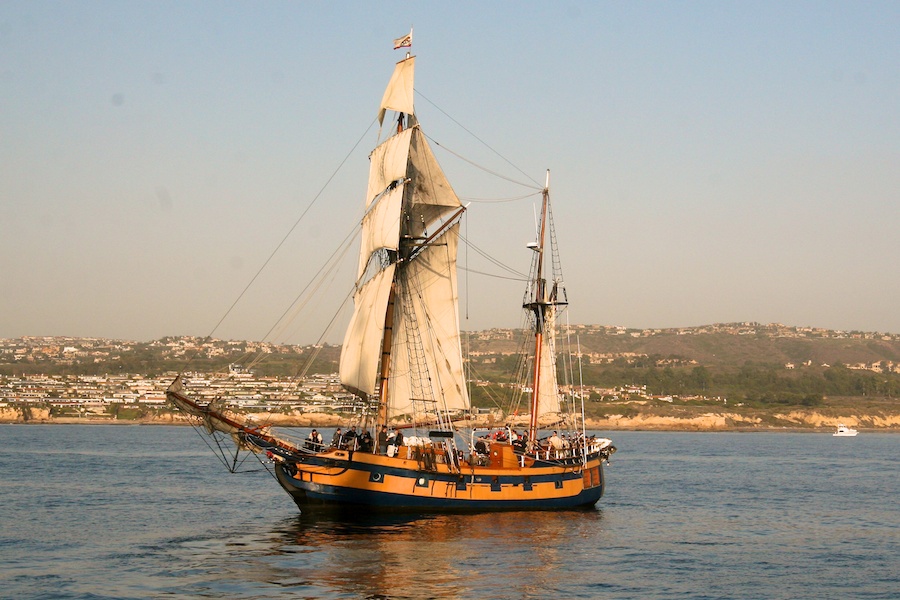
We have her on the run

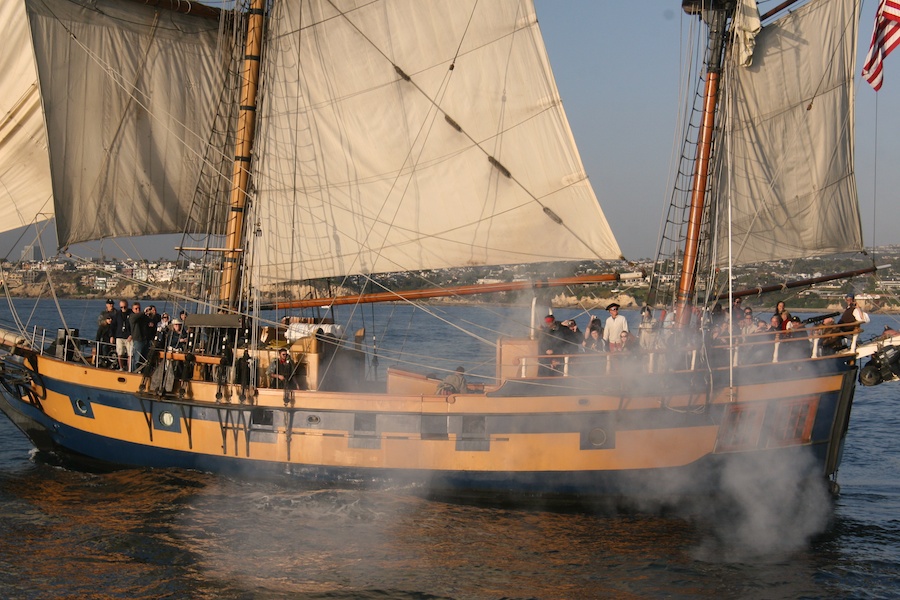
Smoke gives them away
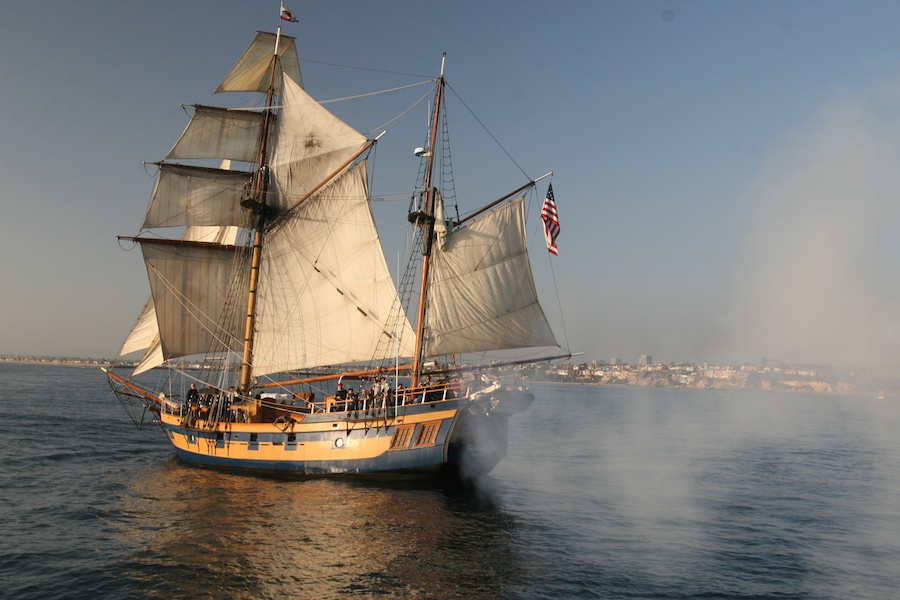
She running for it....
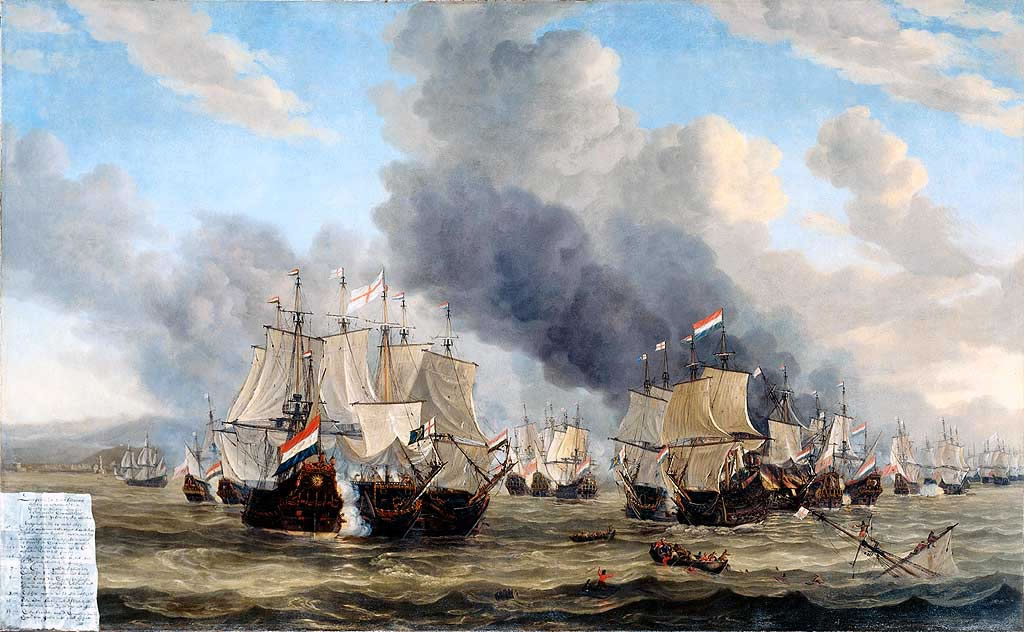
Our imaginations wonder
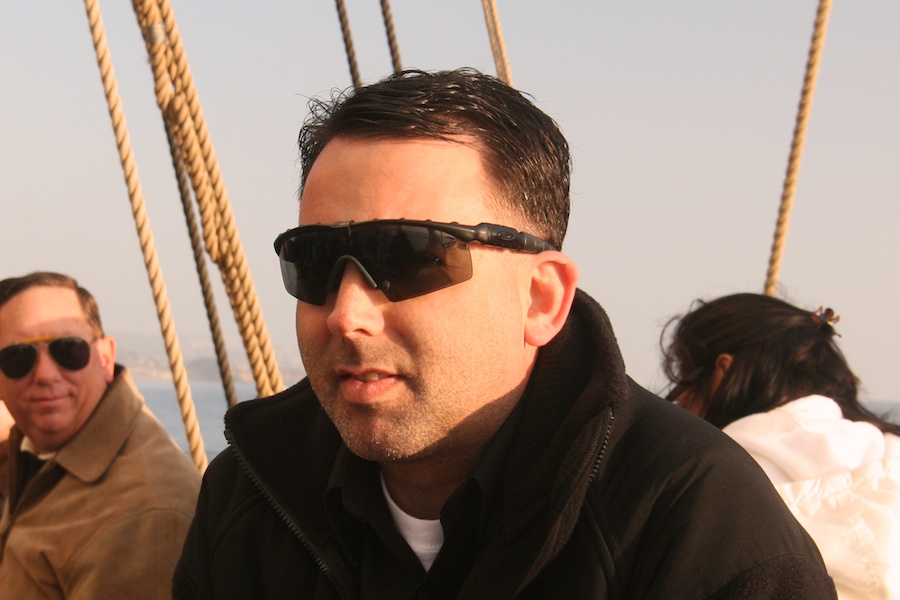
Pete is happy
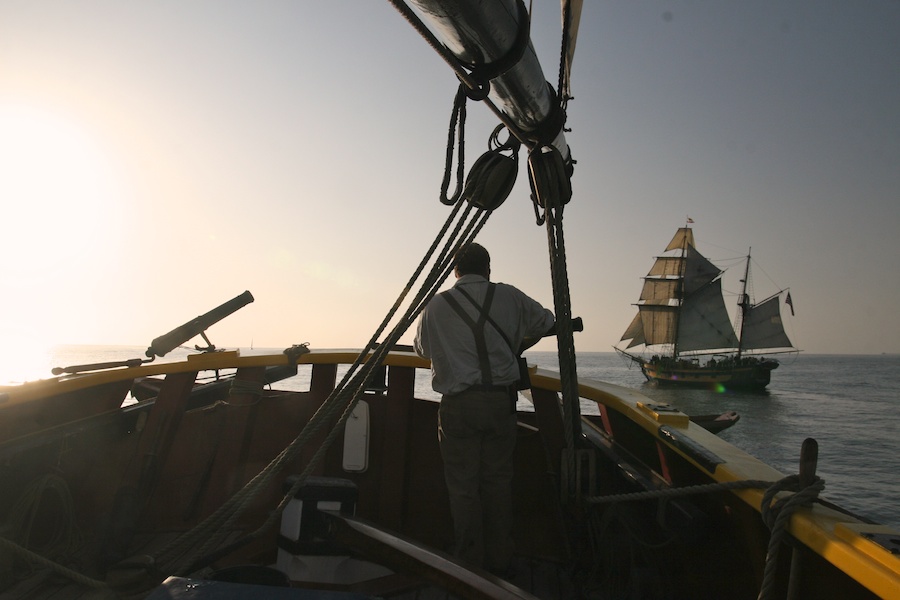
Oh oh... She may be coming back
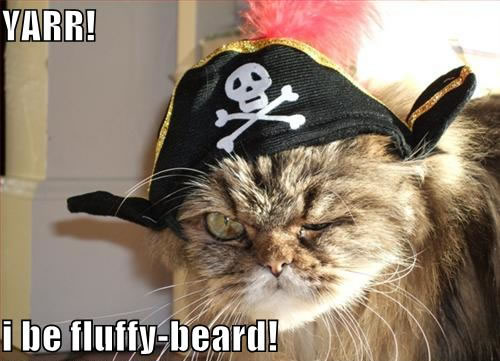

The Captain always examining the sails
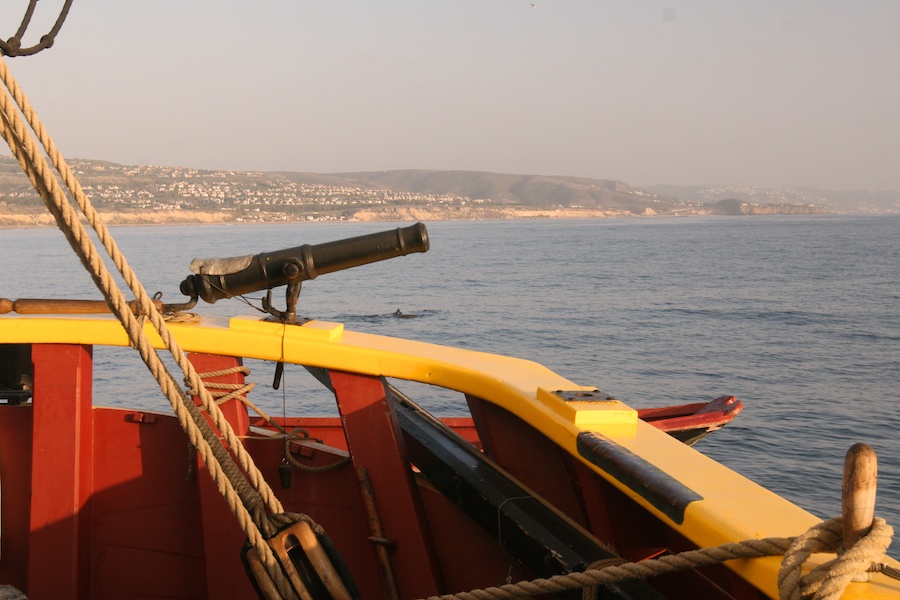
The business end of the boat
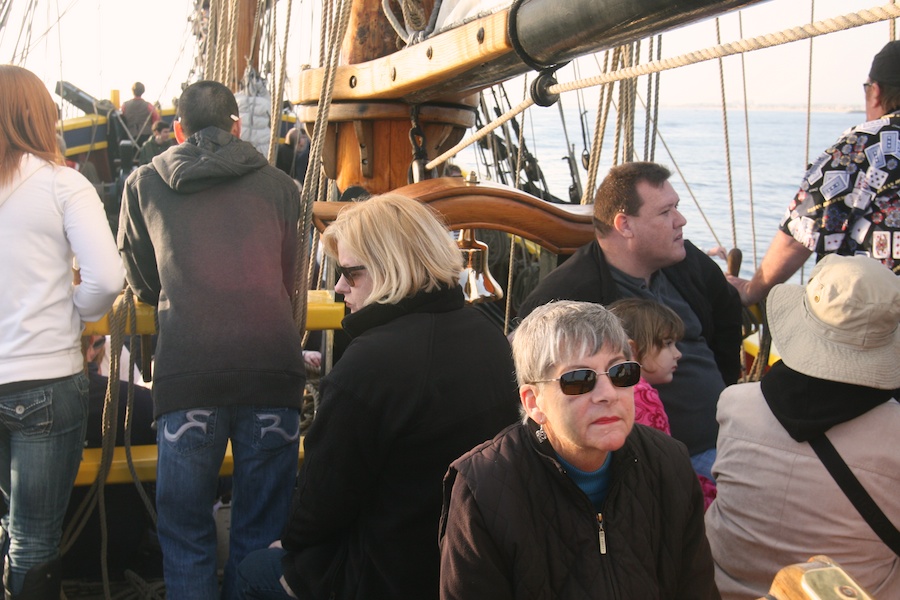
Sun is setting and it is getting a bit cooler
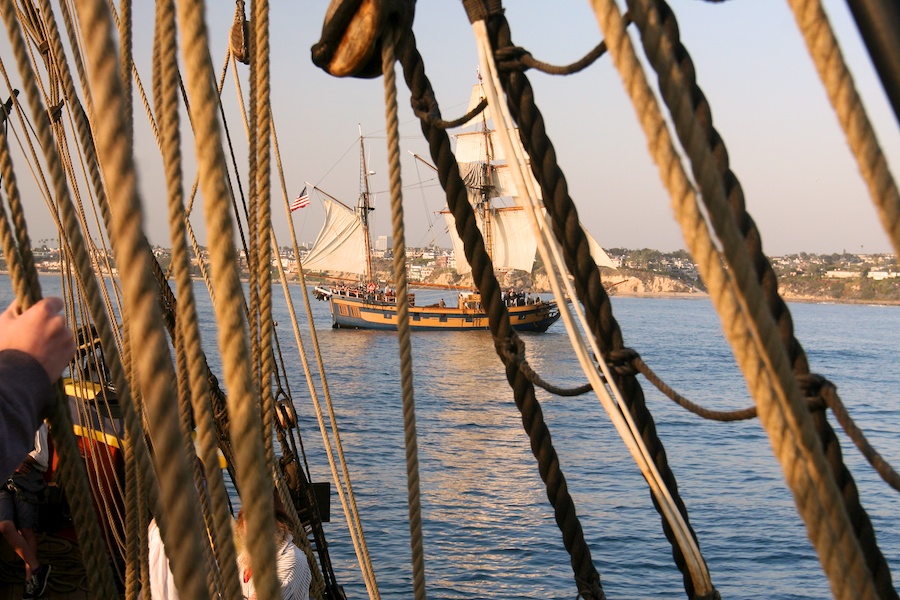
Lines and ropes everywhere
Did You Know? - In most cases, rope is the term used only for raw material. Once a section of rope is designated for a particular purpose on a vessel, it generally is called a line, as in outhaul line or dock line. A very thick line is considered a cable. Lines that are attached to sails to control their shapes are called sheets, as in mainsheet. If a rope is made of wire, it maintains its rope name as in 'wire rope' halyard.
Lines (generally steel cables) that support masts are stationary and are collectively known as a vessel's standing rigging , and individually as shrouds or stays. The stay running forward from a mast to the bow is called the forestay or headstay. Stays running aft are backstays or after stays.
Moveable lines that control sails or other equipment are known collectively as a vessel's running rigging . Lines that raise sails are called halyards while those that strike them are called downhauls. Lines that adjust (trim) the sails are called sheets . These are often referred to using the name of the sail they control (such as main sheet, or jib sheet). Sail trim may also be controlled with smaller lines attached to the forward section of a boom such as a cunningham; a line used to hold the boom down is called a vang, or a kicker in the United Kingdom. A topping lift is used to hold a boom up in the absence of sail tension. Guys are used to control the ends of other spars such as spinnaker poles .
Lines used to tie a boat up when alongside a dock are called docklines, docking cables or mooring warps. In dinghies the single line from the bow is referred to as the painter .
Some lines are referred to as ropes:
- a bell rope (to ring the bell),
- a bolt rope (attached to the edge of a sail for extra strength),
- a foot rope (on old square riggers for the sailors to stand on while reefing or furling the sails), and
- a tiller rope (to temporarily hold the tiller and keep the boat on course). A rode is what keeps an anchor attached to the boat when the anchor is in use. It may be chain, rope, or a combination of the two.
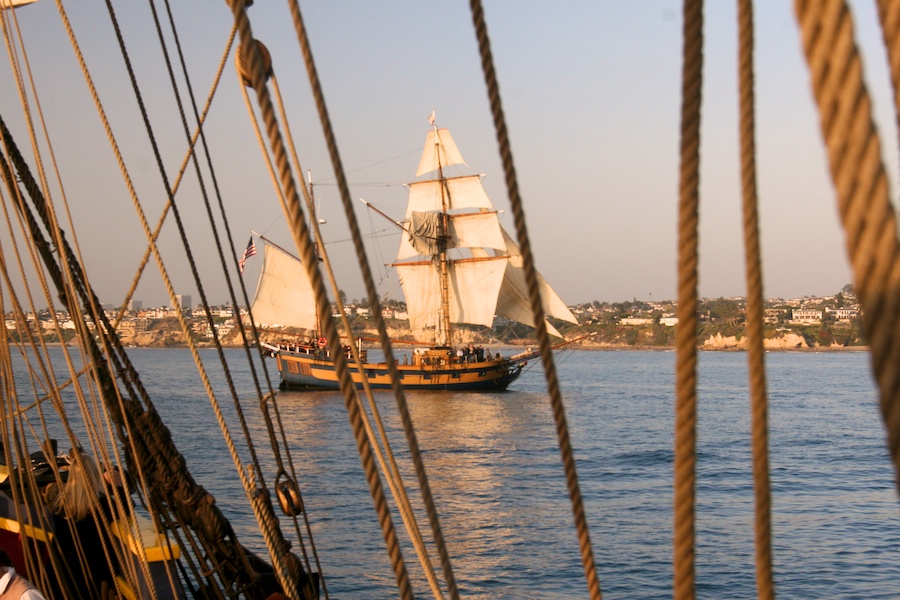
Heading into port
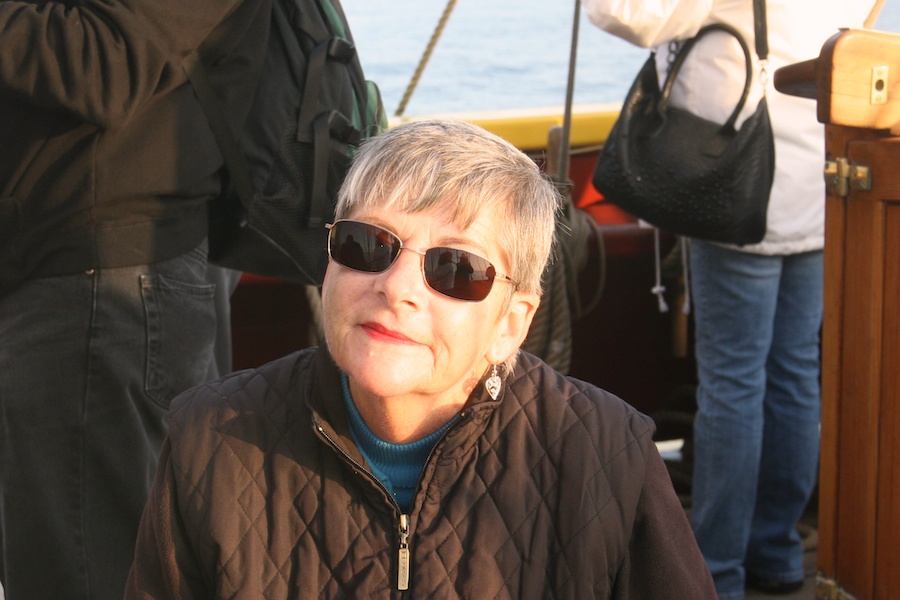
"This was fun"
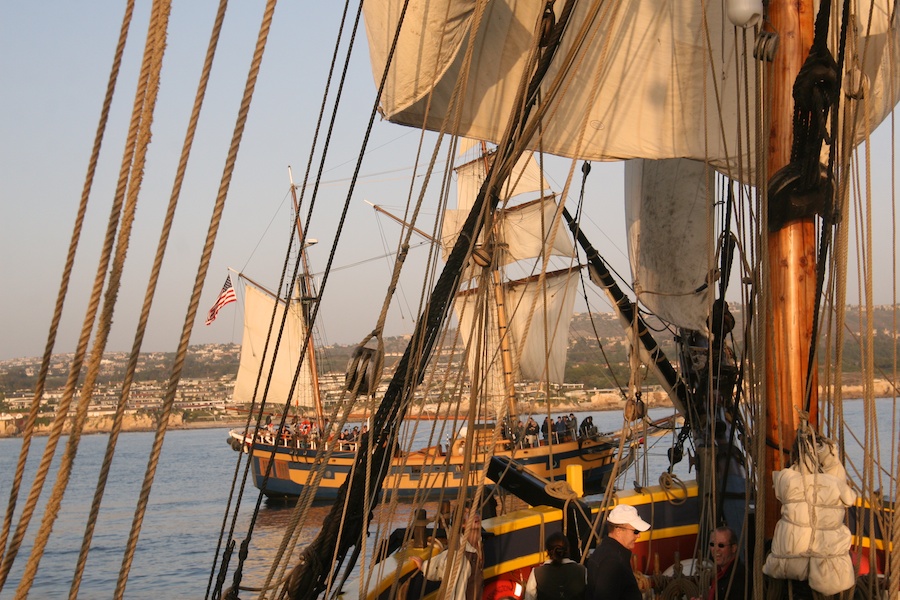
We are getting close.. Are we going to board her???
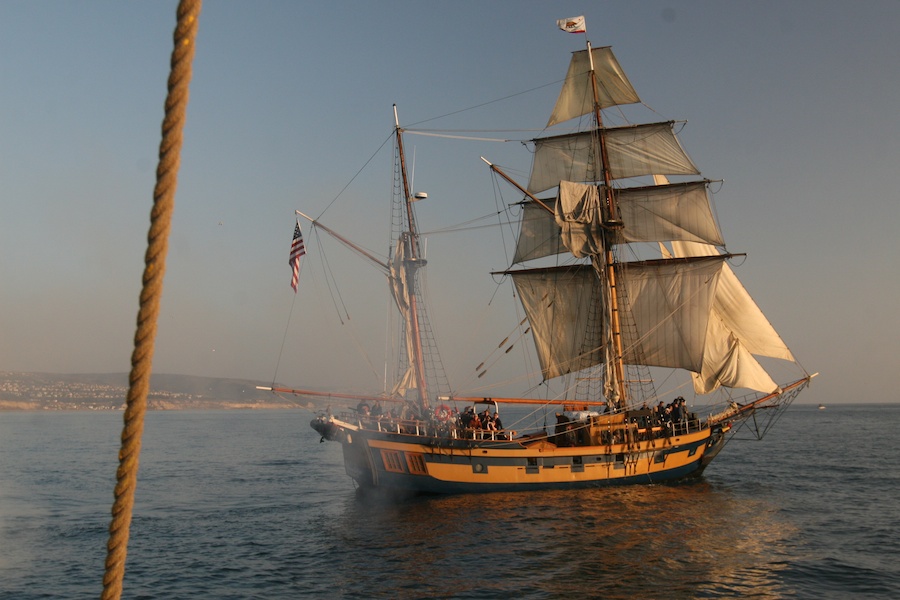
Sneaky devil... One last shot

Everybody pitches in
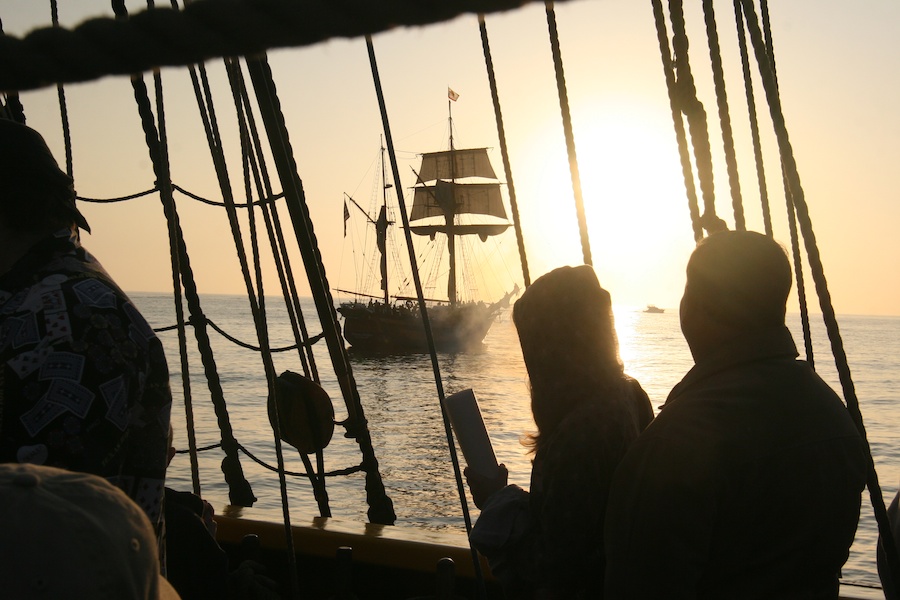
The sun is getting lower into the horizon
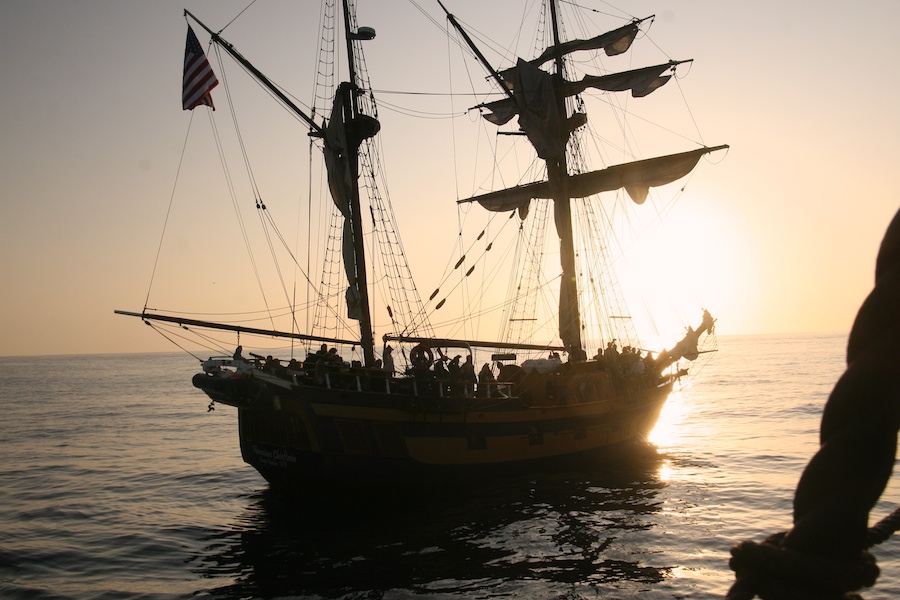
Time to start the engines....

Sail are neatly tucked in
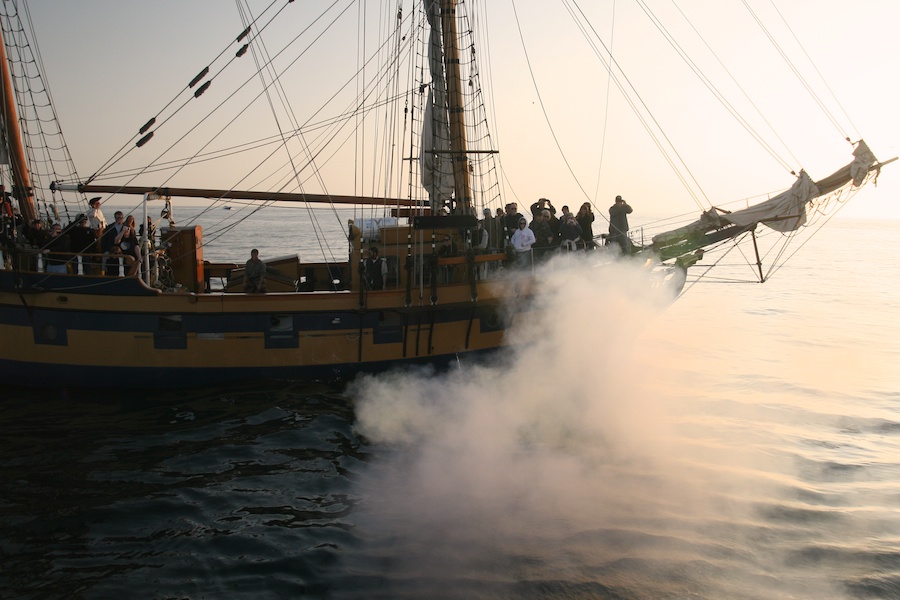
We have NO mercy.... One last broadside
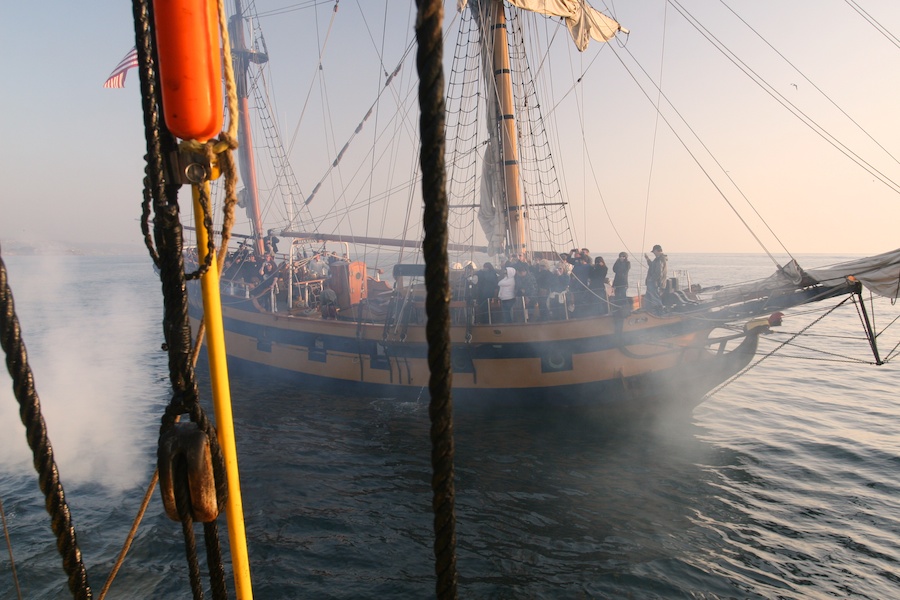
And another
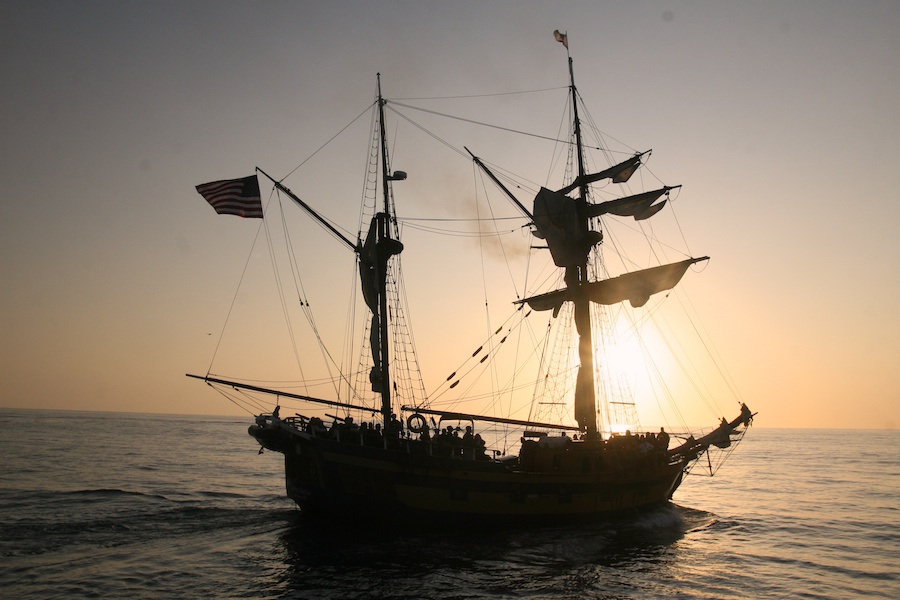
The golden sunset
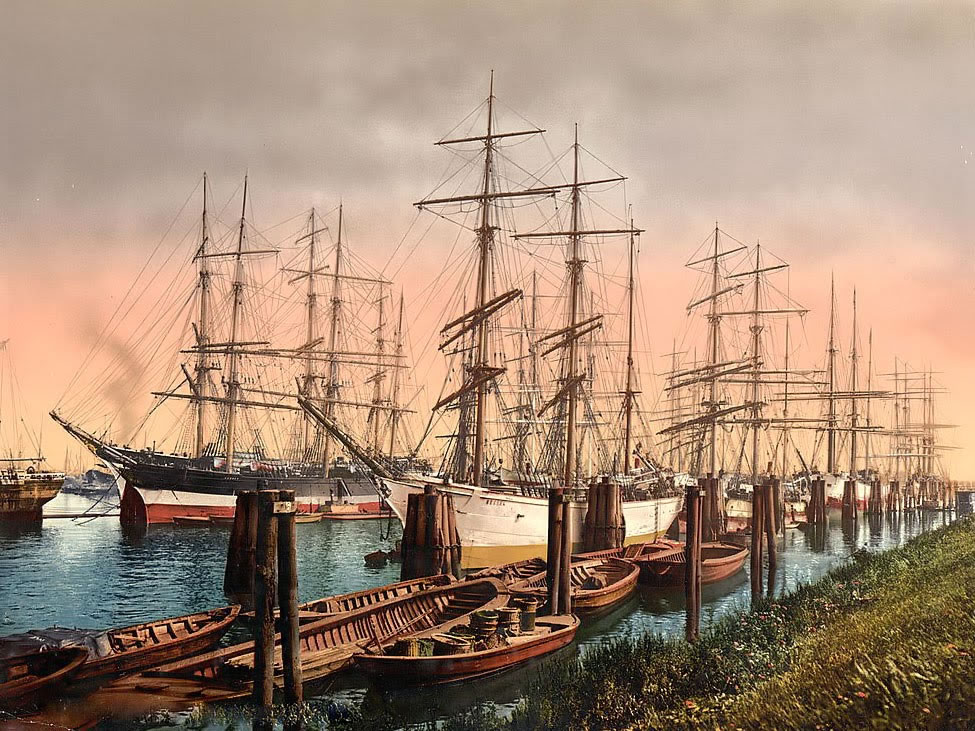
In days of yore....
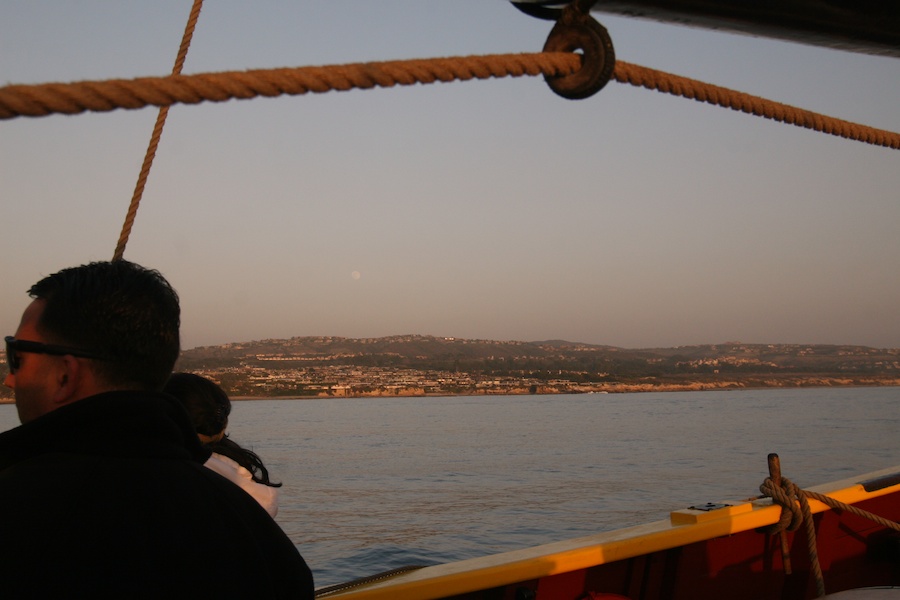
We are about two miles are so out
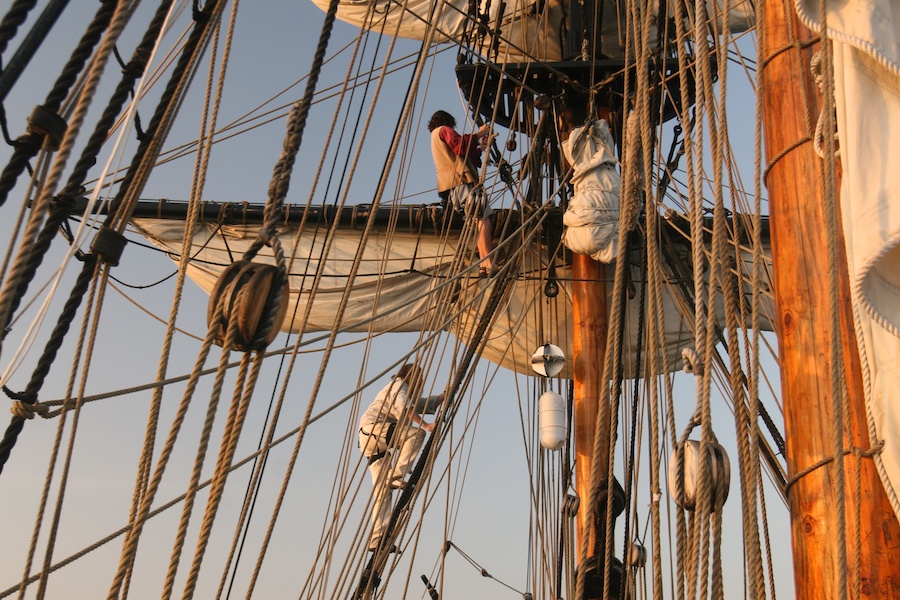
Must tie up the sails

Off they go into the overheads
Back Into The Safety Of The Harbor
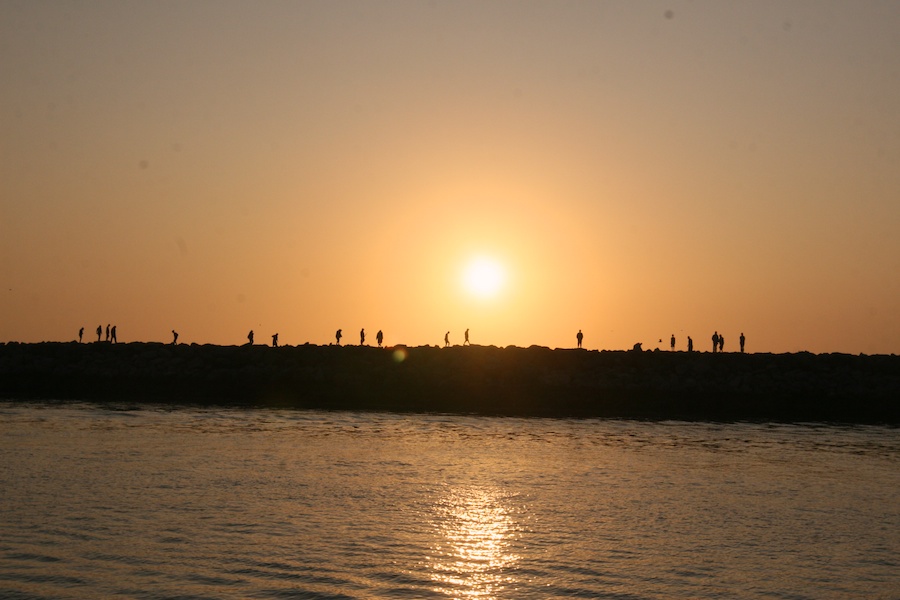
People walking the channel at sunset make good targets

Even the sun had a great time today
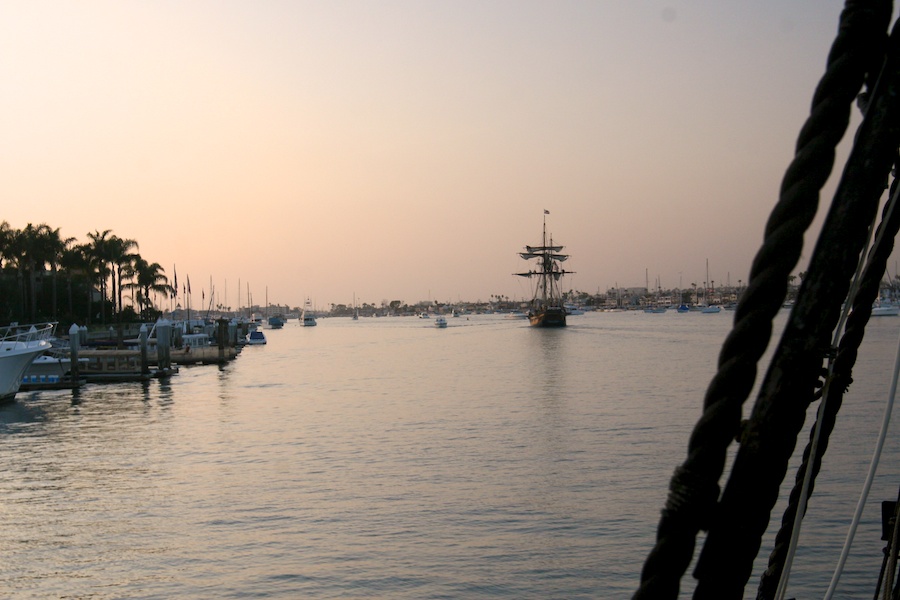
No we are under motor sail....
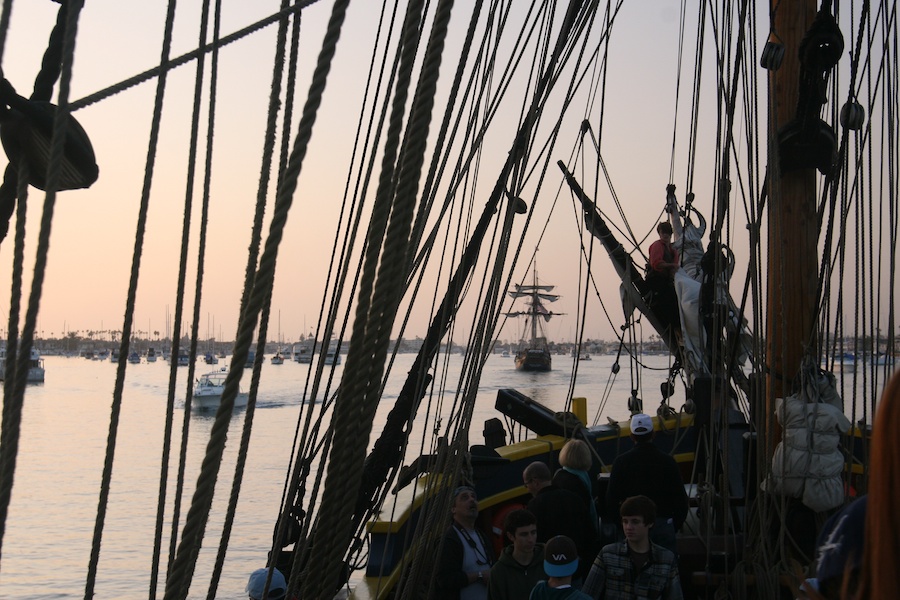
The Chieftan leads the way

A beautiful day
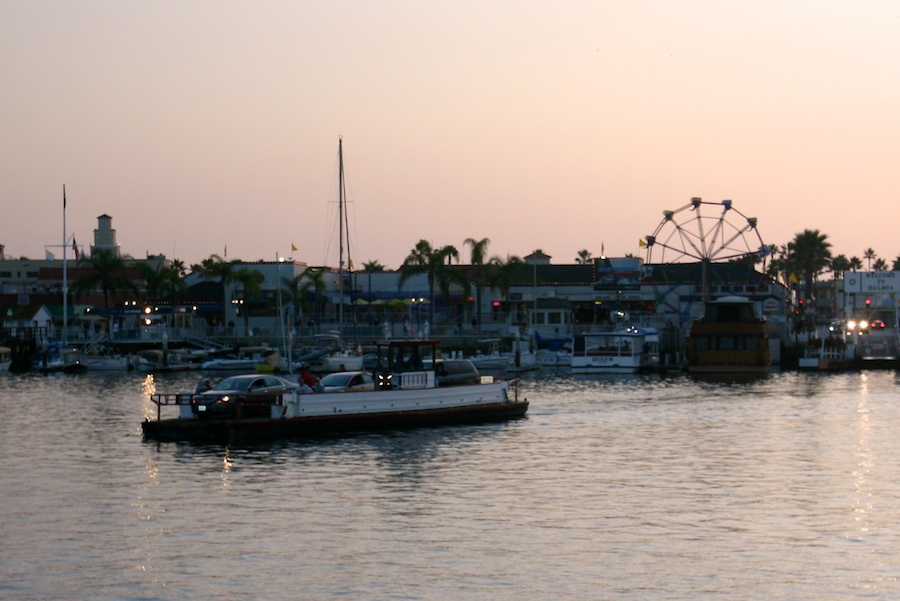
We go right past the Balboa Ferry
Did You Know? - In 1919 Joseph Alen Beek obtained the rights from the city of Newport Beach to provide a ferry service across the Newport Harbor between Balboa Island and the Balboa Peninsula. Before starting the ferry service Beek owned "The Ark". The Ark consisted of a giant rowboat with a small engine which Beek used as his first ferry vessel. The Ark carried oars in the event of engine failure. There was no regularly scheduled service and customers telephoned Beek when they needed a ride across the harbor.
In 1919 Beek charged a nickel (5 cents) per person. Three years after commencing operation, Beek built the "Fat Ferry". This vessel held twenty passengers. Beek later built a small one car barge which the Fat Ferry pushed across in front of it.
In the 1950s Beek built three double-ended wooden boats for his ferry service: the Admiral, the Commodore, and the Captain. These three boats are still presently in service and have transported over two million persons. Each ferry holds three cars and 75 people. As of 2007 the Beek family charges $1 per adult, $2 per vehicle, $.50 for children ages 5–11, $1.25 for adults on bikes, $.75 for children on bikes, $1.50 for motorcycles and children under the age of 5 are free.
The ferry boats need constant maintenance but this does not usually interrupt the ferry service. For two weeks in 2008 the ferry service shut down for an extended period, for the first time in 50 years, to rebuild the automobile ramp leading to the boats.
Currently, Beek’s three sons run the business and it has been in the family for close to 100 years.
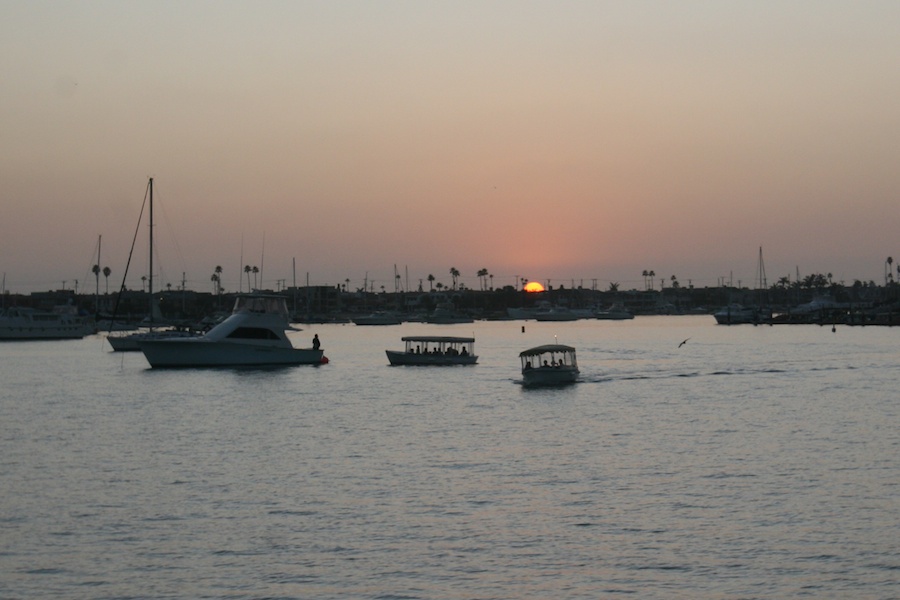
A great afternoon
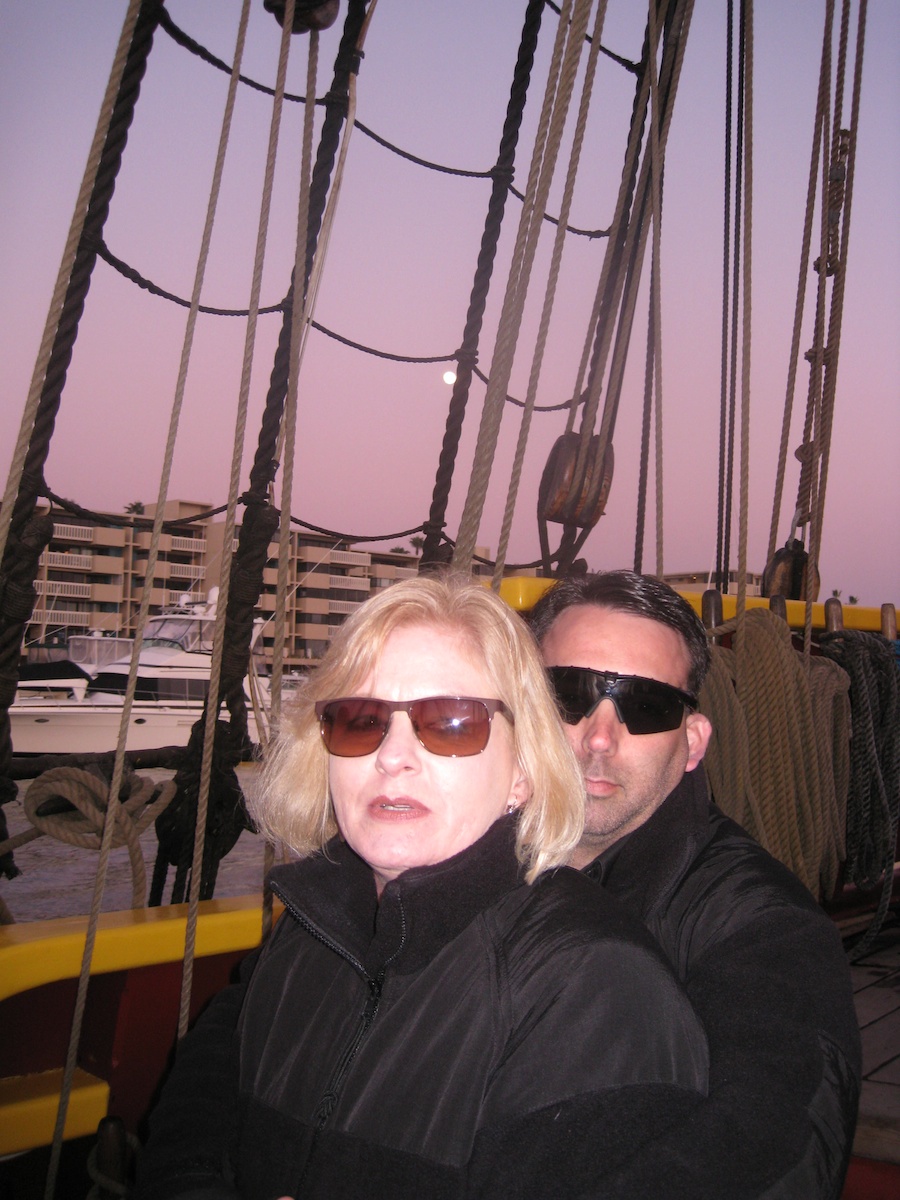
Someone was COLD!
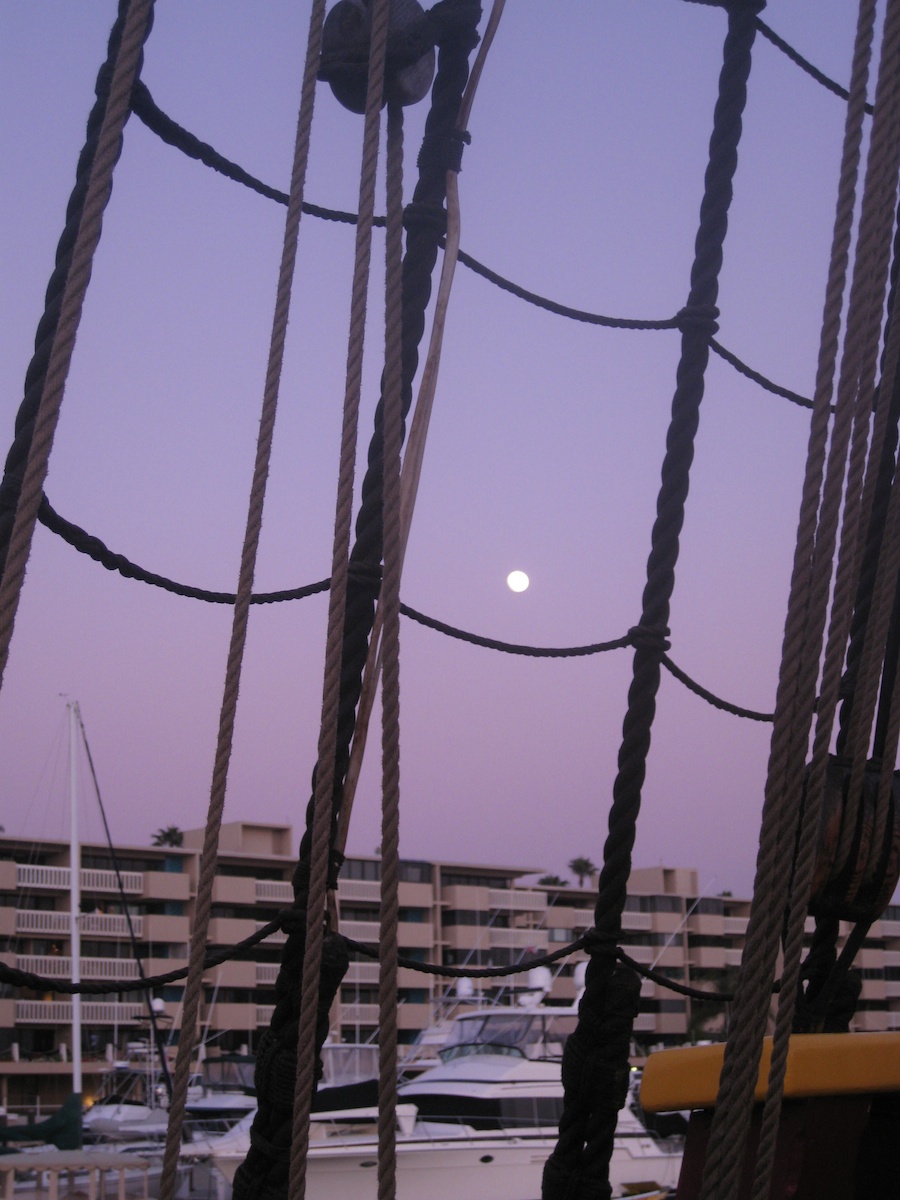
The moon was very bright this evening....
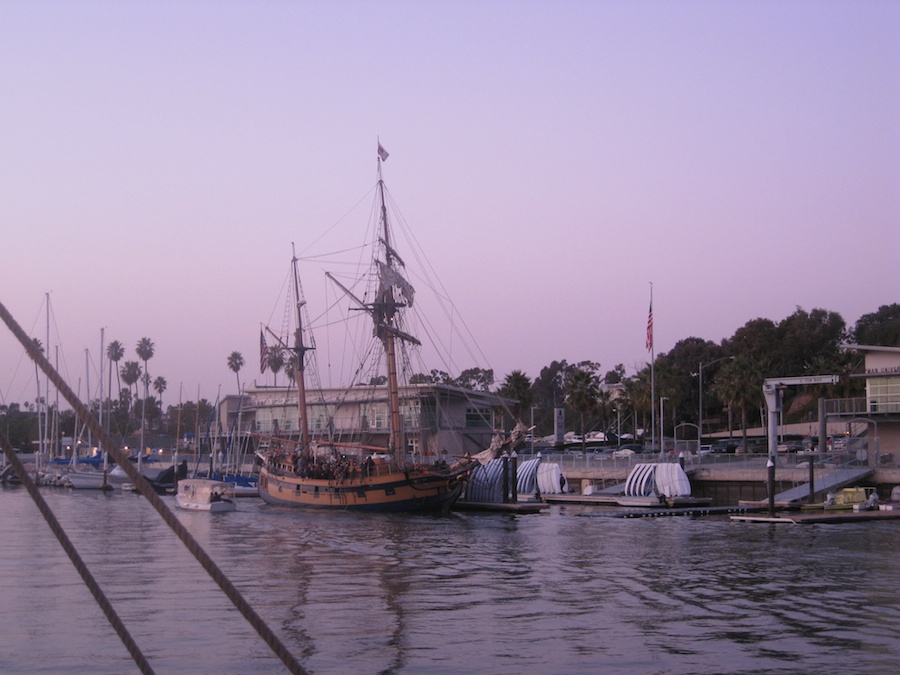
We tied up using the Chieftan so the Lady is the first one out tomorrow
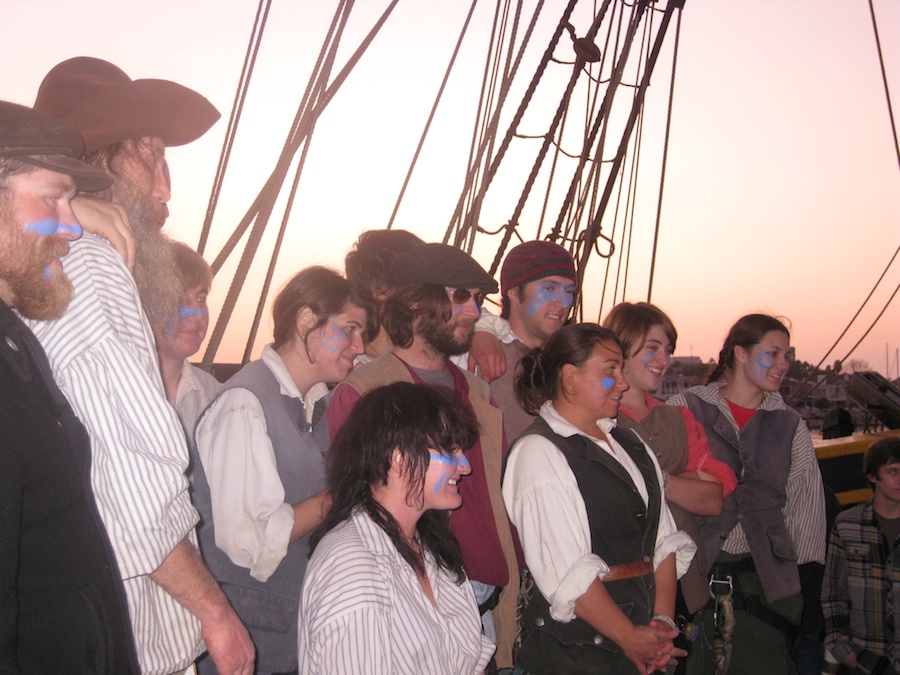
The crew posed.... Hey! Who is steering the ship???
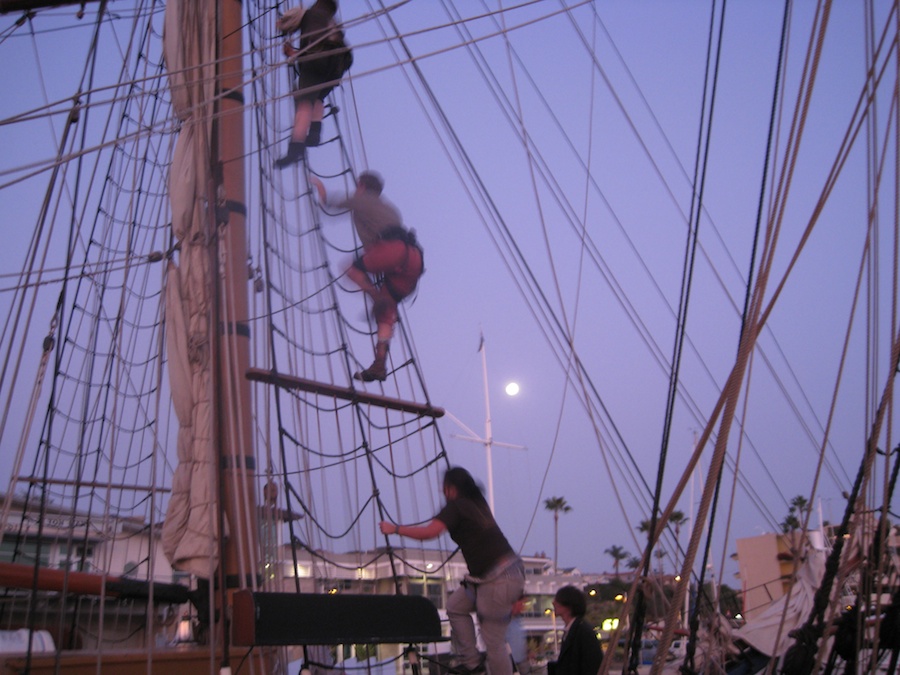
Up they go to tidy up the sails....
Afterwords????
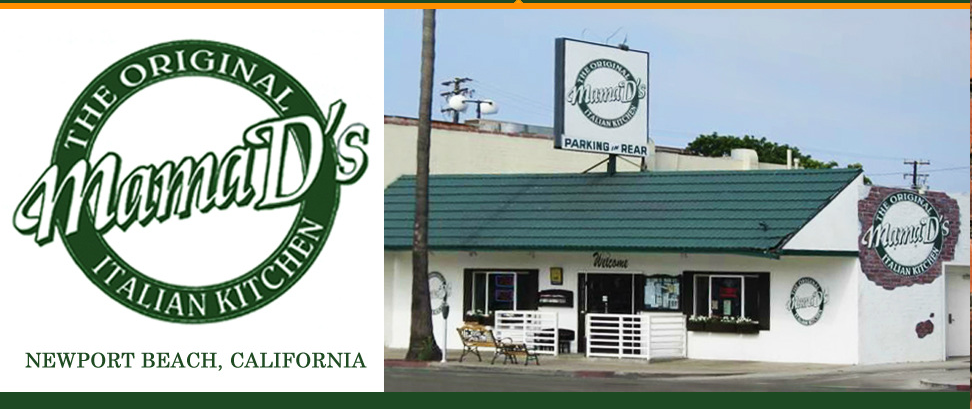
We went to Mama D's for a super Italian dinner and then headed for home until....
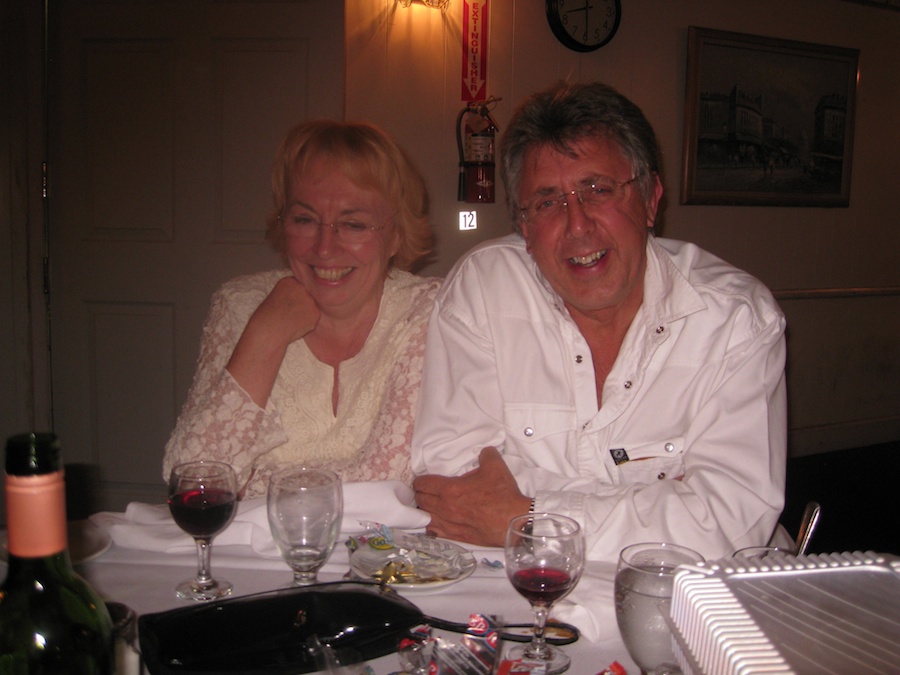
We went to the Garden Grove Elks and met up with Jan and Brian, and...

Bob and Donna!
The Next Day We Went Back To Newport To The Elks And Guess Want?
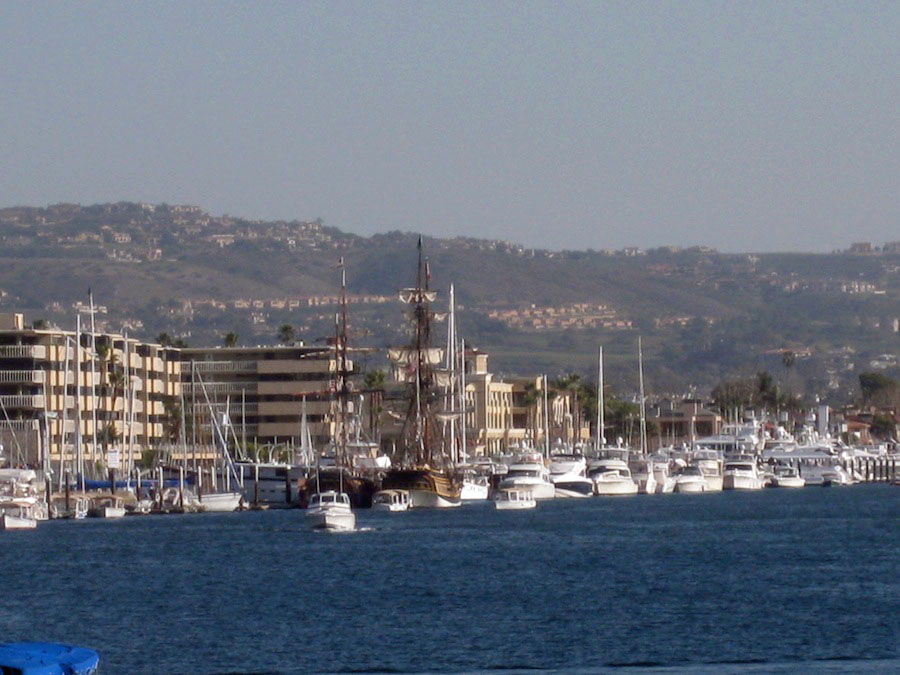
Our ships were getting ready for another Battle Sail....